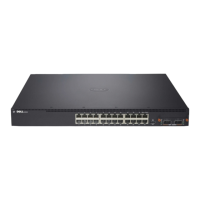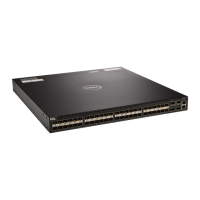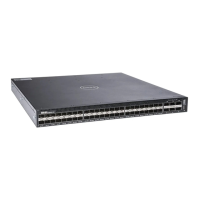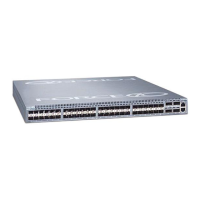12 Stacking Dell Networking Switches: N4032, N4032F, N4064, N4064F
2.1.1 QSFP+ quad-breakout cables
QSFP+ quad-breakout cables may also be used for stacking. This allows a 40G QSFP+ port to connect to
four 10G SFP+ ports on the adjacent switch. When a breakout cable is used, the connections are
considered to be four links taking up four ports.
2 864
1 753
10 161412
9 151311
18 242220
17 232119 ACTLNK
19 21 23
20 22 24
17
18
11 13 15
12 14 16
9
10
3 5 7
4 6 8
1
2
ACTLNK
QSFP+ quad-breakout cable may be used for stacking Figure 8
To use a QSFP+ quad-breakout cable to stack two peers, the QSFP+ port must be set to port mode 4x10G
and reloaded before setting it to stack mode (described in the next section). From the interface
configuration CLI prompt, use the hardware profile command to set the port to this mode. The
command is:
console(config-if-Fo1/0/1)#hardware profile portmode 4x10g
This command will not take effect until the switch is rebooted.
When the portmode changes on a port, so do the interface names. For example, a QSFP+ port may be
named
Fo1/0/1
when in 40G mode but takes on a new identity as
Te1/1/1 through Te1/0/4
when changed
to 10G mode. Therefore, if it is desired to use the QSFP+ quad-breakout cable, be sure to set the port
mode to 4x10G and reload the switch
before
setting the ports to stack mode since configuration settings
on one port mode does not translate to the other portmode.
Also, when in port mode 4x10G it is required that all four of the breakout ports be moved from Ethernet
mode to Stack mode to use them for stacking.
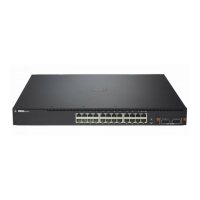
